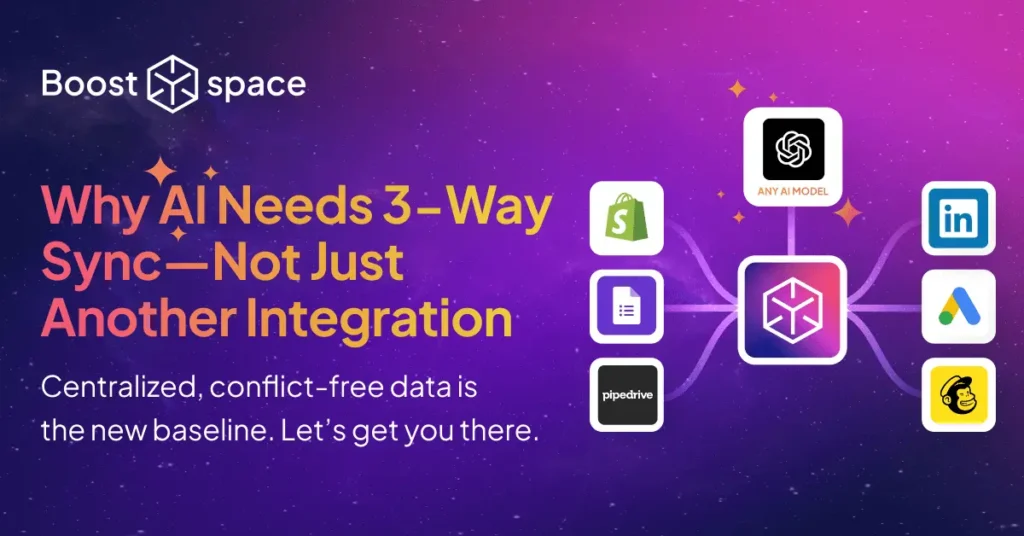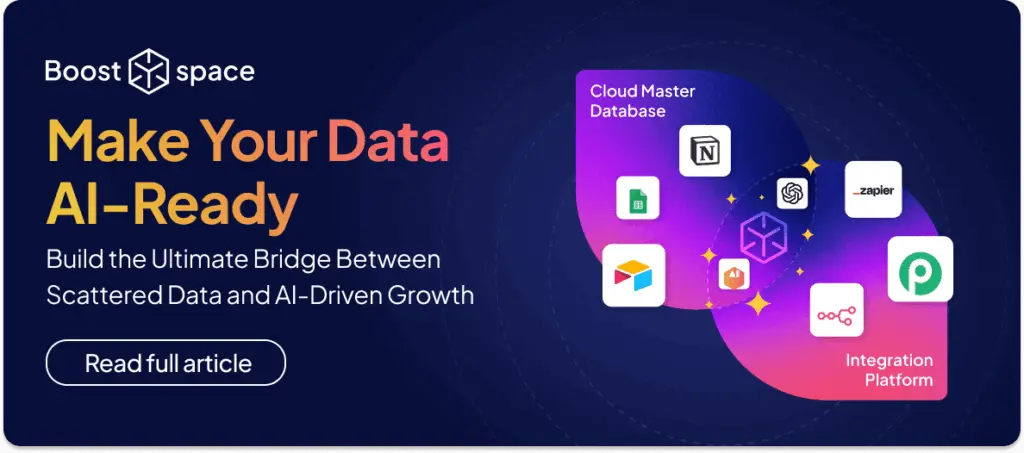In today’s fast-evolving e-commerce and SaaS world, seamless data flow across every platform isn’t a “nice-to-have”—it’s essential. While many businesses have mastered basic two-way synchronization, the increasing complexity of multi-channel operations is exposing its limits. Enter 3-Way Sync: the next evolution for businesses that want to stop losing sales, eliminate costly errors, and enable real-time, AI-ready analysis across all systems.

What is 3-Way Sync and Why Does It Matter?
Traditional two-way sync connects two platforms—say, your inventory management tool and your e-commerce storefront—ensuring changes on one side are reflected on the other. But what happens when you add a third (like a marketplace or CRM)? Simple integrations start to break down, leading to:
- Out-of-date product listings
- Double orders or overselling
- Fragmented analytics and reporting
- Manual “fixes,” eating up time and increasing risk
3-Way Sync means updates made on any one platform automatically cascade to all other connected tools in real time. No more broken connections or missed opportunities—just reliable, end-to-end data consistency.
The Tangible Benefits of 3-Way Sync
- Sales and Inventory Harmony: All product and stock updates are reflected instantly—across your own site, connected marketplaces, and internal management systems.
- Customer Satisfaction: Fast fulfillment and up-to-date information means fewer order cancellations, complaints, or missed expectations.
- Operational Efficiency: Free your team from endless manual corrections and focus on growth and analytics instead.
- AI Readiness: 3-Way Sync ensures your business data is always clean, unified, and primed for advanced automation or analytics.
How Does 3-Way Sync Lift Revenue?
Picture a business active on three major sales channels—its own website, Amazon, and an ERP system. A single inventory update must be propagated to all, instantly. Delays or mismatches don’t just lead to lost sales—they damage reputation, bury your analytics in noise, and create drag across the entire business.
With true 3-Way Sync, you automate stock and order updates, pricing changes, and customer data, feeding a “single source of truth” for smarter planning, optimized marketing, and fail-safe scaling—even during peak season.
Going Beyond Retail: Use-Cases in SaaS and B2B
While 3-Way Sync is crucial for e-commerce, it’s just as transformative for SaaS and B2B firms. Imagine a software company syncing customer data between their support desk, CRM, and billing platforms. Whenever a customer updates their profile or purchase status in any system, all tools immediately reflect the change. The result? More personalized support, targeted upsell opportunities, and accurate, integrated reporting without the manual chase.
Healthcare providers can keep patient records, appointment bookings, and insurance billing perfectly aligned, minimizing administrative effort and enhancing compliance. Even manufacturing companies can sync data between ERP, procurement, and logistics, allowing for full supply chain transparency and improved demand forecasting.
Implementing 3-Way Sync: The Boost.space Advantage
While some platforms claim multi-directional sync, very few deliver robust, real-time 3-Way Sync for cloud environments, especially at scale. Solutions like Boost.space make it possible to automate integration with marketplaces, ERPs, e-commerce platforms, and more—without complex coding or brittle processes. All updates, triggers, and workflows become consistent, traceable, and actionable.
Through Boost.space, you also gain access to advanced AI-powered features such as automated deduplication, enrichment, and intelligent alerting for anomalies or trends—driving even more value from your unified dataset.
Real-World Impact
- Retailers: Eliminate overselling, sync promotional pricing, and handle omnichannel fulfillment with confidence.
- SaaS & B2B: Ensure cross-system customer data is aligned for support, engagement, and reporting.
- Growth-Stage Startups: Scale operations without hiring an army of data wranglers.
- Global Enterprises: Sync multi-lingual catalogs, international pricing, and compliance data in real time.
Pro Tips for Getting Started
When evaluating or implementing 3-Way Sync, keep these best practices in mind:
- Audit your current integration pain-points. Start by identifying manual data transfers, mismatched records, or places where a process breaks down.
- Map critical data flows. Understand which platforms “own” which pieces of data, and where a delay or discrepancy would cost you the most.
- Start with high-impact syncs. Quick wins, like stock and order syncing, deliver visible results for your team and customers.
- Monitor and refine. Once live, watch for data gaps, latency, or error alerts—then iterate your automations for even greater performance.
- Prioritize partners skilled in real cloud and API-driven sync—not just basic connectors.
Is Your Business Ready?
In a multi-platform world, settling for basic two-way sync holds you back. The boost in efficiency, sales, and AI capability from 3-Way Sync is no longer reserved for enterprise giants—it’s critical for any business that wants to grow smarter, faster, and more reliably today.

